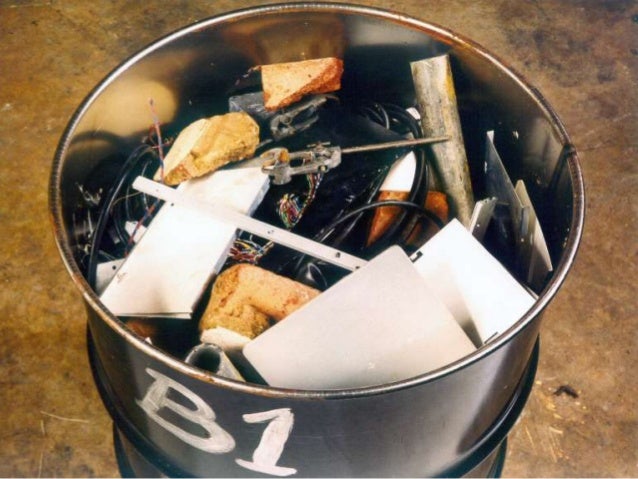In today's post I'd like to discuss nuclear waste and its properties.
Nuclear waste is often imagined as a sort of cartoony toxic green goo in large yellow barrels, but this is really not the case! In fact nuclear waste can exist in many forms and varieties.
A quick screenshot of what turns up when I search 'nuclear waste' on Google Images
LLW consists of of the least dangerous waste; things like paper, plastic and metal that has been used in hospitals, research establishments and certain aspects of the nuclear industry. Fun fact: in the UK LLW makes up 90% of the volume of nuclear waste but only <10% of the radioactivity (UK White Paper on Nuclear Waste Disposal, 2014).
ILW is defined as waste that exceeds the radioactivity boundaries of LLW, but is not so radioactive that heat is an issue when it comes to handling and storing it. It's normally produced from the reprocessing (essentially reusing) of spent fuel or from parts that are used in nuclear sites/reactors but that are not in direct contact with nuclear fuel and the sludges produced from the treatment of radioactive liquids (IAEA, 2009).
 |
| LLW container in the UK |
 |
| South African ILW concrete container cut open |
ILW is usually packaged into containers of iron, steel or concrete and most countries have plans to eventually put these underground.
ILW and LLW are far less dangerous than HLW and so the science and controversy behind their disposal is less of an issue. Most countries already have plans in place and have already started acting on them so I won't talk about them moving forward.
So what is high level waste? HLW is the waste that people most commonly are referring to when talking about the issues of nuclear energy. HLW is usually the spent fuel, and sometimes the liquids that come in contact with them. HLW waste has several complications when it comes to dealing with it, namely its temperature, its radioactivity and the length of time it's radioactive for (IAEA, 2009), it remains radioactive and hot enough to kill you within minutes for years.
 |
| Some cute little uranium pellets |
Now obviously HLW has to be dealt with, but exactly how much of it do we have to deal with? Well in the history of nuclear power, humanity has generated 276000 tonnes of HLW (IAEA, 2009), almost all of it currently sitting on the surface level storage facilities which I'll discuss in more detail next week!

Fairly straightforward, deconstructs some basic concepts and eases the reader into the narrative. And I like how you connect it with your next blog post - keeps it cohesive!
ReplyDeleteThis is a really easily digestible break-down of the different grades of nuclear waste, and what their effects are. Do you personally think that the prescribed measures used to dispose of each category of waste are sufficient? Note I say prescribed- of course there are several instances in the past where the "prescribed" method has not been adhered to!
ReplyDeleteI do believe so! The levels of radioactivity present in most nuclear waste does just nicely fall into three categories!
Delete